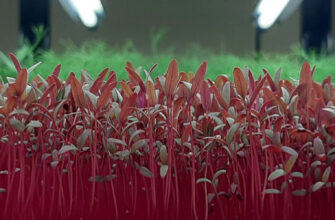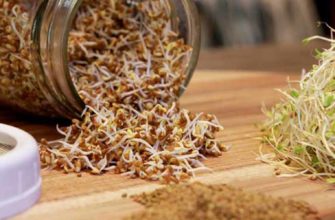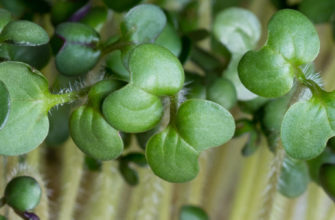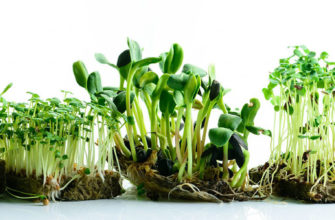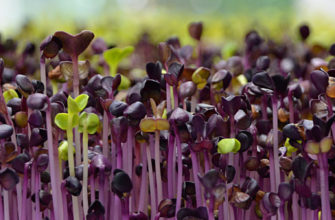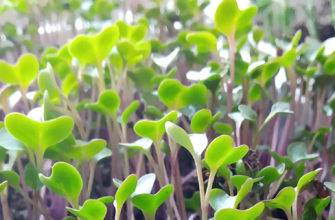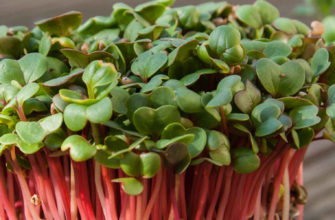We are sure that you have long heard about the new trend in nutrition called microgreens. These tiny mini-plants have gained their popularity because they are incredibly rich in nutrients.
It is well known that the foods we eat affect the condition of our skin. Read in the article about what changes you can expect if you include microgreens in your diet.
- What are microgreens?
- Microgreens or sprouts
- Benefits of Microgreens for Skin
- Reduction of Fine Lines and Wrinkles on the Face
- Reduction of Breakouts and Pimples
- Less Damage from the Sun
- What Else Is Microgreens Good for Health
- The Best Types of Microgreens for Women
- How to Add Microgreens to Your Diet
- Topical Use of Microgreens
What are microgreens?
For those unfamiliar with the term, microgreens are young vegetable or herb plants harvested when they reach only a few centimeters in height.
Many believe that mature vegetables contain more nutrients than their young green counterparts, but this is not true at all. Despite their small size, microgreens contain a highly concentrated level of nutrients.
The exact composition depends on the vegetables, but most contain many of the following elements:
- Vitamins. Microgreens contain a full spectrum of vitamins from A to K. Many also contain carotenoids, which technically are not vitamins but convert to vitamin A when absorbed by the body. Vitamin A plays an important role in skin care.
- Minerals. Microgreens contain various minerals, but the most common are potassium, zinc, copper, magnesium, and iron.
- Antioxidants — they are incredibly important for the skin as well as for all other cells of the body.
Long-term studies have shown that the nutrient level in young plant sprouts is nine times higher than in mature fruits. Experts believe this is because microgreens are harvested at a young age. This means they contain all the nutrients necessary for the plant’s growth. These nutrients are not spent during growth and remain in the young sprouts.
Microgreens or sprouts
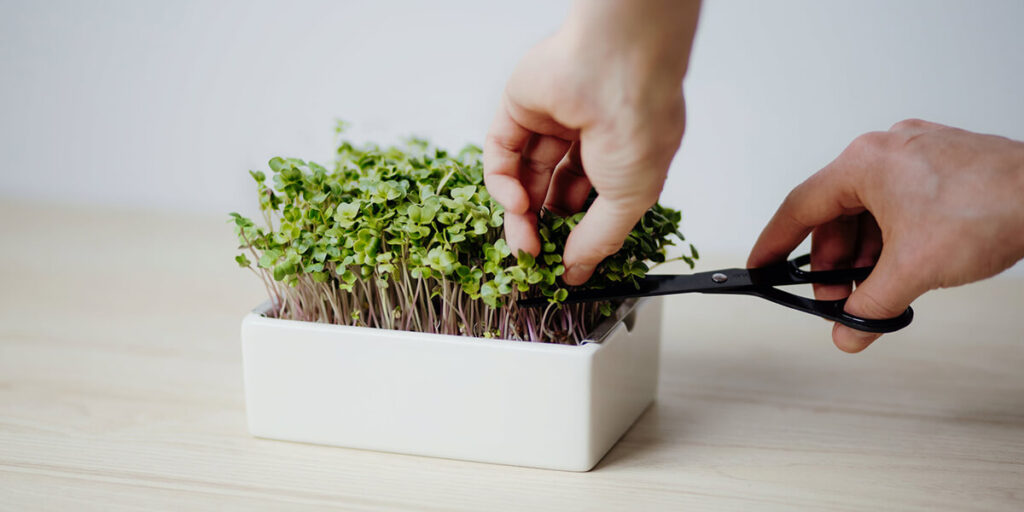
Sprouts are another popular superfood that many often confuse with microgreens. However, they are completely different things.
Sprouts are plant seeds that have recently germinated. They have few leaves, but their swollen seeds can also be eaten. Sprouts are ready to eat a few days after sowing, while microgreens grow for 7–14 days before they are ready to be consumed.
Both types are extremely beneficial for skin and overall health. However, microgreens are more aromatic, while sprouts have more texture due to their wonderful crunch.
Benefits of Microgreens for Skin
Reduction of Fine Lines and Wrinkles on the Face
Nowadays, everyone fights signs of aging with various creams, serums, beauty injections, and so on. But few people know that regular consumption of microgreens can slow down this process.
How does it work? It all comes down to the polyphenols in microgreens, which are an extremely powerful group of antioxidants. They help the skin produce collagen and elastin, which are the main proteins responsible for maintaining the smoothness and firmness of the skin.
Polyphenols also help prevent the breakdown of existing collagen and elastin fibers, which occurs for various reasons, from prolonged sun exposure to skin pollution.
The more collagen the body has, the smoother and younger the skin will look, and antioxidants play a key role in this.
Reduction of Breakouts and Pimples
Acne is caused by skin inflammation, and consuming microgreens can help reduce it. Again, the anti-inflammatory effect of microgreens occurs thanks to the antioxidants contained in these tiny plants. By reducing inflammation, they also decrease the frequency and severity of breakouts, allowing you to enjoy a clear and healthy complexion.
Of course, the anti-inflammatory action of microgreens is not limited to pimples. Other inflammatory skin conditions can also improve, such as psoriasis, rosacea, and so on.
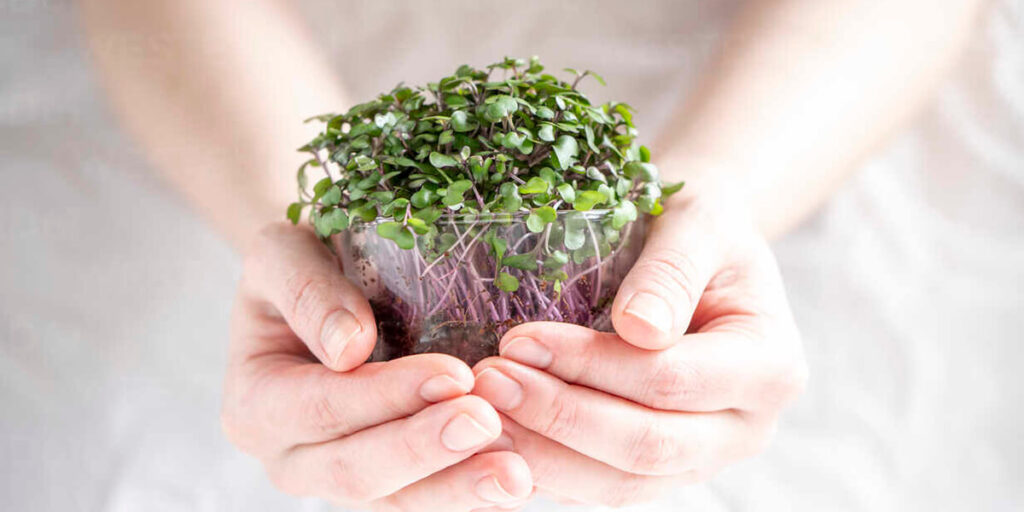
Less Damage from the Sun
The sun has a destructive effect on the skin. It not only causes wrinkles to appear on the face but also leads to discoloration and the formation of dark spots on the skin.
Even when using sunscreen all year round, some sun damage is inevitable. Therefore, it is always worth trying to help the skin recover as much as possible. This can be done by consuming more foods rich in antioxidants.
Antioxidants stimulate blood flow to the skin, which means the skin receives more oxygen and nutrients. This allows it to produce new cells faster and even repair various damages.
What Else Is Microgreens Good for Health
As you understand, all these vitamins and antioxidants are not only beneficial for the skin but also for overall human health. Consuming vegetables is a necessary condition for maintaining immunity, and microgreens usually contain even more nutrients, giving the body a powerful boost.
How can young sprouts help the human body stay young and healthy? Again, this is thanks to antioxidants. They help improve the absorption of sugar by the body’s cells, which is very important for diabetes.
Polyphenols reduce the level of bad cholesterol in the body, which lowers the risk of cardiovascular diseases. Equally important is that they prevent the occurrence of various types of cancer.
The Best Types of Microgreens for Women
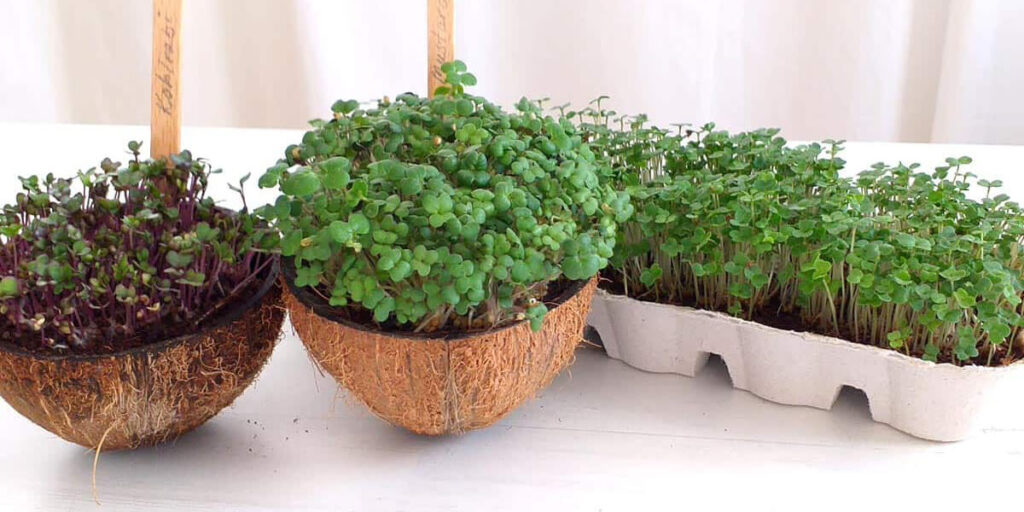
There are hundreds of types of plants that can be grown as microgreens. We want to share with you a list of the best plants for skin and female beauty:
- Sunflower – rich in vitamins A, B, D, and E, as well as a number of other nutrients, including beta-carotene.
- Peas – contain seven times more vitamin C than blueberries and eight times more folic acid than bean sprouts.
- Radish – along with a spicy taste, radish microgreens are rich in folic acid, vitamin B6, and carotene.
- Broccoli – in addition to a wide range of vitamins, microgreens also contain a compound called sulforaphane. It has an incredible ability to target cancer cells, including skin cancer.
- Beetroot – not only colorful microgreens but also a useful superfood that helps reduce stress. This can help soothe many skin conditions.
- Cabbage – like its mature counterpart, it is considered one of the most nutritious foods in the world.
How to Add Microgreens to Your Diet
Ideally, you should have access to fresh microgreens. This is easier than it seems since microgreens are simple and quick to grow at home. Read our articles on how to easily grow microgreens and sprouts at home:
If this is not possible or you just want to try microgreens for the first time, many stores now also sell them. But keep in mind that the nutrient levels are much higher when microgreens are eaten fresh. This applies not only to microgreens but to almost all vegetables. For example, spinach loses about 90% of its vitamin C in the first 24 hours after harvesting.
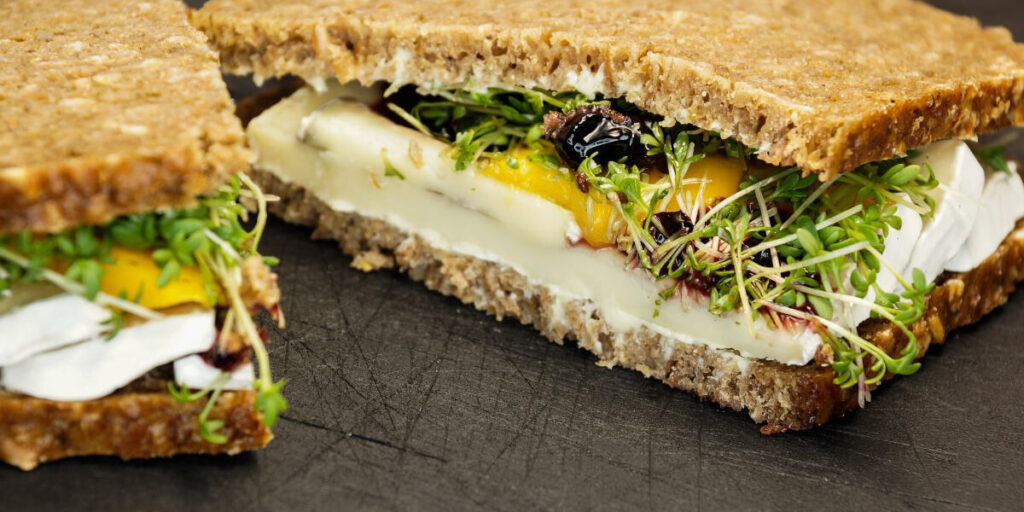
Like many other vegetables, microgreens are best eaten raw. This not only helps preserve more nutrients but also gives a fresh and delicate taste that is lost during cooking.
Try using microgreens as a garnish for almost any dish, add them to salads and sandwiches for a crunchy texture. Microgreens can also be added to non-alcoholic cocktails or smoothies to give them a fresh aroma and flavor.
If you still want to try cooking dishes using microgreens, you can use them like any other greens, whether steamed or sautéed. However, remember that microgreens are very delicate, so they should only be cooked for a few seconds.
We also suggest checking out these recipes for cooking with microgreens:
Topical Use of Microgreens
As you now know, consuming microgreens is very beneficial for the skin. However, you have probably wondered if there is a way to use sprouts for topical application.
Of course, there is! Many brands now include microgreens in their skincare formulas. Look closely, and you will find them in everything from cleansers to serums and creams.
You can also make your own skincare product with microgreens. The easiest way to do this is to prepare a face mask. For this, mix a handful of ground microgreens with honey. Apply the mask to the skin and leave it on for 10-15 minutes, then rinse thoroughly and apply a moisturizer to your face.
The advantage of topical use of microgreens is that it allows the outer layers of skin cells to make the most of all these nutrients. Most topical products do not penetrate the skin deeply enough to nourish the deepest layers of skin cells. The only way to achieve this is by increasing nutrient intake.
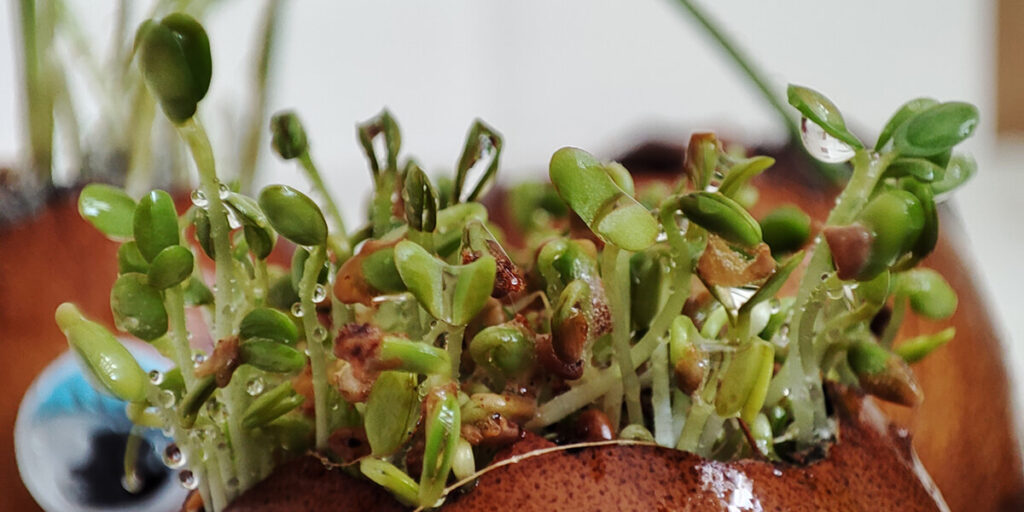
Since microgreens are so beneficial for women, it makes sense to include them in your diet as often as possible. If you cannot regularly buy fresh greens, it is worth trying to grow them yourself. After all, in that case, you will always have fresh and aromatic microgreens on your table.
If you have found a spelling error, please, notify us by selecting that text and pressing Ctrl+Enter.

